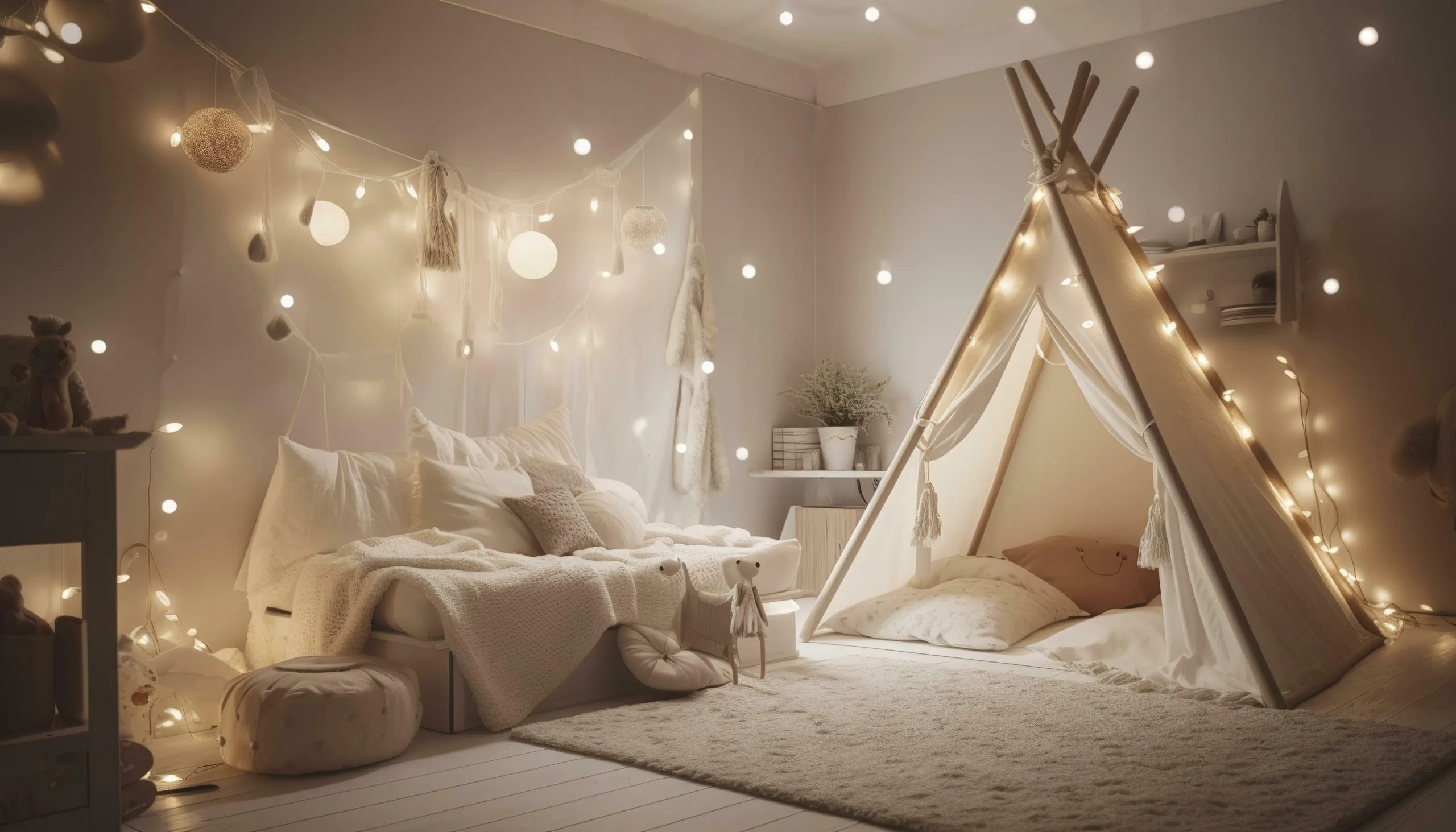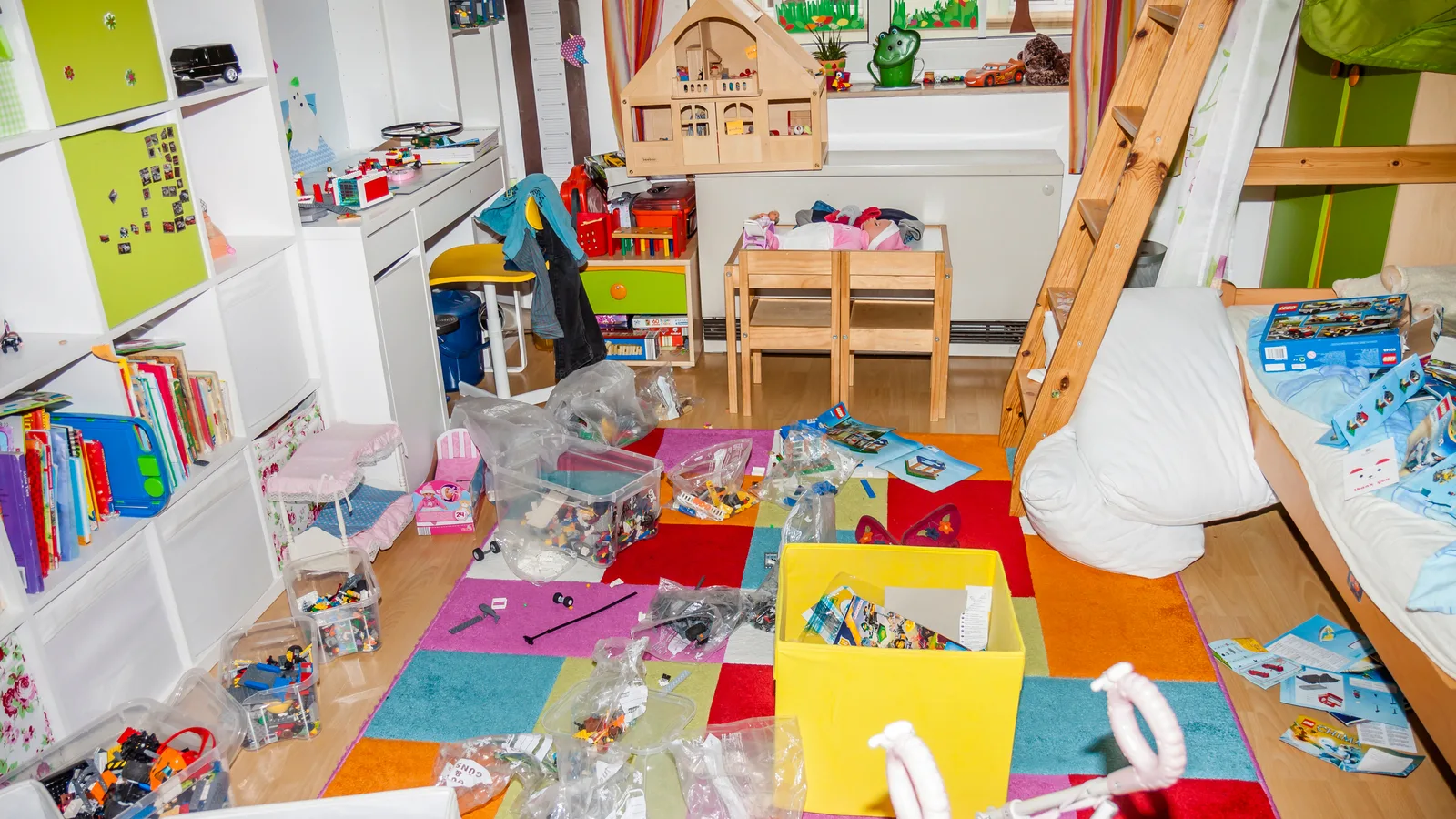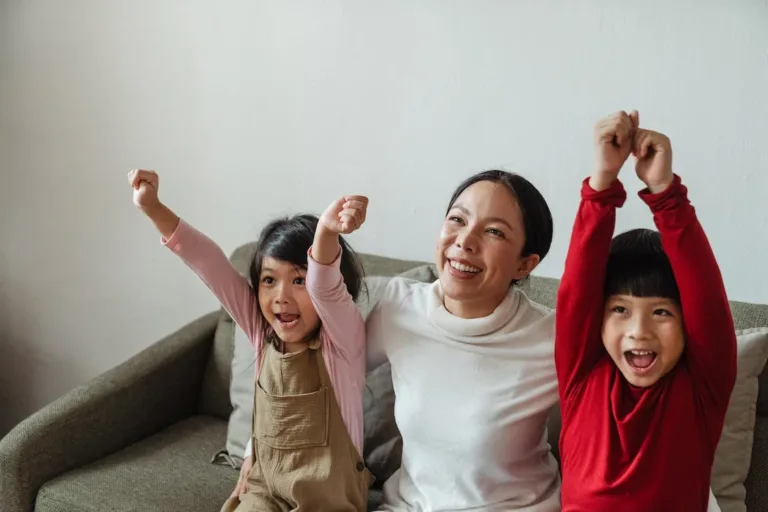Have A Good Night & Sweet Dreams: 5 Easy Tips For Creating A Haven For Your Little Cub
As a mother, I know firsthand how important it is to create a peaceful and nurturing environment for my little ones for them to have a good night. It’s the place where they feel safe, loved, and cared for. And when it comes to have a good night sleep time, creating a cozy haven of peace is essential for their well-being.
That’s why I want to share with you some tips on how to create a sweet dreams space for your little cub. From incorporating calming scents and sounds to simplifying your home environment, there are many strategies you can use to help your child sleep soundly through the night.
So let’s dive in and explore together how we can make our homes a sanctuary of restful slumber for our precious little ones.
Have A Good Night Sleep By Creating A Cozy Sleep Space
Make sure your child feels secure and comfortable in their sleeping area to promote a restful night’s and have a good night sleep. Soft lighting and comfortable bedding can go a long way in creating a cozy sleep space. Consider using dimmer switches or bedside lamps with warm-toned bulbs instead of bright overhead lights. This will help create a relaxing ambiance that promotes relaxation, calmness and have a good night sleep.

Personalizing decor is another way to make the sleep space feel special for your little one. Hang up some of their favorite artwork or family photos on the walls, or add decorative pillows and blankets that reflect their interests. By making the space uniquely theirs, they’ll feel more connected to it and more willing to spend time there.
With these simple touches, you’re creating an environment that fosters feelings of comfort, safety, and warmth – all important components of have a good night sleep. So now that we’ve established how to create a cozy sleep space, let’s talk about how to use calming scents and sounds to further enhance the atmosphere.
Using Calming Scents and Sounds
Relax with soothing fragrances and gentle melodies to help your child unwind and definitely have a good night sleep. One way to create a peaceful sleep space is by incorporating essential oils and aromatherapy. Lavender, chamomile, and ylang-ylang are all known for their calming properties that will help them have a good night sleep. Simply add a few drops of these essential oils into a diffuser or onto a cotton ball placed near your child’s bed.
The subtle scent will fill the room with relaxation, promote restful and have a good night sleep. Another way to enhance your child’s sleeping environment is by playing white noise or nature sounds. These gentle background noises can help block out distracting sounds from outside and soothe your little cub into slumber.

There are many free apps available that offer a variety of sounds such as rainforest, ocean waves, and even heartbeats. By incorporating these calming scents and sounds into your child’s bedtime routine, you’ll create an oasis of tranquility that will help them drift off into sweet dreams.
As important as it is to create a cozy sleep space for your little one, incorporating mindful practices during waking hours can also contribute to better rest at night. Let’s explore how we can promote mindfulness in our daily routines without adding extra stress or pressure on ourselves or our children.
Incorporating Mindful Practices
Incorporating mindful practices into daily routines can contribute to better sleep for children without adding unnecessary stress or pressure. Breathing exercises are one way to help children calm their minds and bodies before bedtime. Encourage your little ones to take a few deep breaths in through the nose and out through the mouth while lying down. This simple practice can help them release any tension they may be holding onto from the day.

Another way to incorporate mindfulness is by reading mindful bedtime stories. These stories often have calming themes, soothing language, and gentle messages that promote relaxation and peacefulness. As you read these stories together, encourage your child to imagine themselves in the story and visualize a tranquil scene.
By incorporating these mindfulness practices into your nighttime routine, you can create a sense of calm and serenity that will prepare your child for a restful night’s sleep. To simplify your home environment, consider decluttering your child’s space so that it feels more organized and calming.
Simplifying Your Home Environment
You can transform your child’s space into a peaceful oasis by simplifying and decluttering their environment, creating a calming atmosphere for them to relax in before bedtime and definitely they will have a good night sleep. As a mom, I know how overwhelming it can be to manage clutter and chaos at home while also attending to the needs of your little one. But with some decluttering tips and minimalist living strategies, you can simplify your home environment and create a haven of peace for your child.

To get started on simplifying your home, try using the 3 column, 5 row table below as a guide:
| Category | Keep | Donate or Sell | Throw Away |
|---|---|---|---|
| ——– | —– | ————– | ———– |
| Clothing | Items that fit properly and are worn frequently | Items that no longer fit or have not been worn in over six months | Damaged or stained items |
| Toys and Books | Favorite toys that are played with regularly and age-appropriate books | Toys that have not been played with in over six months or broken toys/books | Outdated books or those that are no longer age-appropriate |
| Furniture/Decorations | Functional furniture pieces that add value to the room decor-wise (e.g., bed, dresser) | Decorative items collecting dust or bulky furniture taking up too much space in the room | Broken/damaged furniture pieces |
By decluttering regularly and adopting minimalism practices like choosing quality over quantity when purchasing new items for your child’s space, you can create an environment conducive to good sleep habits. Tailor these strategies to suit your family’s unique needs so you can enjoy sweet dreams together before bedtime.
Tailoring Strategies to Your Family’s Needs
Now we get to customize these strategies for our own crazy crew and turn our home into a sleep sanctuary so that kids will have a good night sleep. The key is to remember that every family is different, with unique needs and quirks. What works for one may not work for another, so it’s important to stay flexible and willing to experiment until you find the perfect solution.
One way to tailor your sleep strategies is by creating flexible routines that work for your family’s schedule. For example, if you have young children who need an early bedtime, consider shifting your dinner time earlier in the evening so that everyone can wind down before bed.
Or if you have teens who prefer staying up later, set a quiet time after a certain hour so that they can still enjoy their evening activities without disrupting the rest of the household.
Communication with your partner is also essential in tailoring sleep strategies – make sure you’re on the same page about expectations and goals, and work together as a team to create a peaceful haven for everyone in your home.
Frequently Asked Questions
What are some common sleep disorders in children and how can they be addressed?
As a parent, I know how important it is for children to have a good night sleep. However, there are common sleep disorders that can affect their ability to rest peacefully.
Sleep apnea is one such disorder, where breathing becomes disrupted during sleep and can lead to snoring or even pauses in breathing.
Nightmares can also disrupt a child’s sleep and cause them to wake up feeling scared or anxious.
It’s important to address these issues by consulting with a pediatrician and following their recommended treatment plan. This may include lifestyle changes, medication, or therapy.
As caregivers, we want our little ones to feel safe and secure while they sleep, so addressing any sleep disorders is crucial for their overall well-being.
How does screen time affect children’s sleep patterns and how can parents limit it?
As a parent, I understand the struggle of trying to keep our children away from screens. However, it’s important to remember that screen time can have negative effects on our little ones’ sleep patterns, especially due to the blue light emitted by electronic devices.
That’s why setting boundaries around screen use is crucial for promoting healthy and have a good night sleep habits in our children. It may be helpful to establish guidelines such as no screens in bedrooms or limiting screen time before bedtime.
As difficult as it may be at times, prioritizing our children’s health and well-being should always come first.
Are there any recommended sleep schedules for different age groups of children?
Have you ever wondered if there’s a right way to put your little one to bed? As a parent, it can feel overwhelming trying to establish healthy sleep habits for your child. Sleep training methods and consistent bedtime routines are key in setting the stage for a good night’s rest.
It’s important to tailor these practices based on your child’s age group, as their needs will evolve over time. From newborns needing frequent feedings and naps, to toddlers transitioning out of cribs and dropping naps altogether, each stage requires its own approach.
By prioritizing regularity in their sleep schedule and creating a calming environment before bedtime, you can help set them up for success. Remember that every family is different, so find what works best for you and your little one – sweet dreams!
How can parents handle night waking and sleep regressions in their child?
Nighttime soothing and sleep regressions can be tough for parents to handle. As a parent myself, I understand the frustration and exhaustion that comes with trying to calm a fussy baby in the middle of the night.
However, there are some helpful sleep training techniques that can make this process easier. It’s important to establish a consistent bedtime routine and create a relaxing environment for your child to sleep in.
When it comes to nighttime soothing, try using white noise or a gentle lullaby to help soothe your little one back to sleep. Remember, every child is different and what works for one may not work for another, so be patient and don’t give up!
With time and practice, you’ll find the method that works best for you and your family.
What are some strategies for transitioning a child from co-sleeping to sleeping independently?
Transitioning a child from co-sleeping to sleeping independently can be a daunting task for any parent. However, with the right strategies in place, it can be a smooth and successful process.
One effective approach is to establish a consistent bedtime routine that includes calming activities such as reading or singing lullabies.
Gradual withdrawal is another helpful technique where parents slowly reduce their presence in the child’s room over time until they are comfortable falling asleep on their own.
It’s important to remember that every child is different and may require varying levels of support during this transition. As a parent who’s gone through this process myself, I understand the challenges but also the rewards of helping your little one develop healthy sleep habits and gain independence.
Conclusion
As a mother, creating a peaceful sleep environment for your little one is crucial. It’s like building a warm and cozy nest for your precious cub, where they can feel safe, protected and for them to have a good night sleep.
Whether it’s using calming scents and sounds or incorporating mindful practices, there are various ways to create a haven of peace for your little bear.
Remember to simplify your home environment as well, minimizing clutter and distractions that may disrupt your child’s restful slumber.
And don’t forget to tailor these strategies according to your family’s unique needs and preferences. As you work towards creating this serene sleep space for your little one, always remember that you’re doing an incredible job as a mother. You deserve some rest too and have a good night sleep- sweet dreams Mama Bear!







